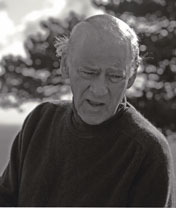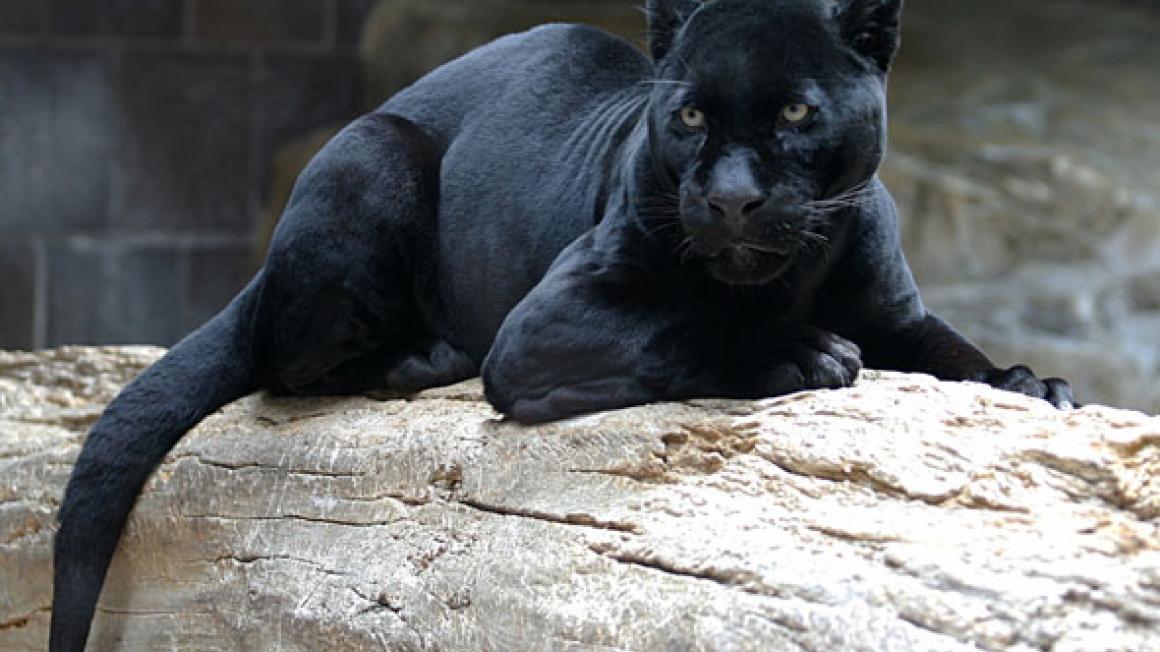The Exmoor beast & the ghost of Glenthorne

My uncle used to talk of the legends and superstitions of Exmoor when I was a schoolboy at the boarding school Blundell’s in the 1940s. I had left my family in Ceylon to gain an English education. He was the vicar of Timberscombe in Somerset and his knowledge of such things was extensive and rather colourful. If a door refuses to remain closed, he would tell me, it is a warning of imminent death. He also advised keeping a donkey among your cows to drive off witches.
But rumours of the ‘Beast of Exmoor’ began in the 1970s. Farmers reported sightings of large, catlike creatures with long tails and green eyes. Eighty sheep were found dead on Exmoor, their throats ripped out in 1983. A party of Royal Marines had to be sent for at some point. Nothing was ever found but sightings persisted. I personally have seen claw marks six feet high on trees above my home at Glenthorne, similar to the territorial markings of a leopard.
Glenthorne occupies the only piece of flat land between Porlock and Lynmouth on the north Exmoor coast. The edge of our lawn is a cliff that falls 150 feet into the sea. Woods cover the steep hills behind the house and streams tumble over mossy rocks down to the stony beach. There are old smugglers’ paths all around. It was to this beach that the materials to build Glenthorne were brought by boat by the Reverend Walter S Halliday, a reclusive clergyman who fell in love with the magnificent situation in 1830. I had heard about Glenthorne from my clergyman uncle while I was at Blundell’s, but never visited. It had remained in the Halliday family and there were stories that it was haunted.
Then in 1984, on my first visit to my old school in 28 years, I learned that Glenthorne was for sale. The house was virtually in ruins but I paid the asking price. My wife and I repaired the Delabole slate roof, the Gothic spires and the broken Bath stone balustrades and we returned the many rooms to their original prime. We paid particular attention to Halliday’s magnificent library and his first-floor study.
The Reverend Halliday died in 1872, yet we always felt that he was watching us. When we hung some old hunting prints in the back hall, one, obviously unacceptable, picture was literally thrown across the hall. When we installed a radio and tape player in the downstairs library, the panelled door banged constantly for nearly 10 minutes – to the amazement of the engineer.
The reverend seemed to be around mostly at night and usually in his study. We often heard him but we never saw him. That is, until one cold December night in 2004, soon after I returned to Glenthorne from a research visit to Sri Lanka. I was battling with the manuscript that became Woolf In Ceylon, tracing the seven years that Leonard Woolf spent in Ceylon from 1904 to 1911 before he wrote his powerful novel, The Village In The Jungle, and married Virginia. Empire was on my mind and, in truth, I felt overwhelmed by the task I had set myself.

It was very late. I settled down in my favourite armchair, closed my eyes for a moment, and suddenly I realised that there was someone else in the room. The feeling was not at all frightening. It was quite reassuring. An old gentleman, well wrapped up in a scarf and nightgown, was seated in a chair (not one of mine) a short distance away from me. He was looking at me quizzically. I was at long last in the presence of the Reverend Halliday.
‘I see that you’re writing a book about Ceylon.’ His voice was low, but quite audible.
‘I am, Sir,’ I replied, ‘and I’m not having an easy time of it.’
There was a pause. The reverend seemed to be thinking about whether or not to say more. I was anxious that he would simply vanish, but he was quite comfortable.
‘You know,’ he said, ‘you’re not the first person from Ceylon to have lived at Glenthorne. A friend of my favourite nephew also came from Ceylon. I say that he lived here, and he did, but only for a few months, because he got involved in a strange situation.’ I was startled by his next question.
‘What do you know about the cat people of Ceylon?’
I have always been intrigued by mythology, witchcraft and superstition and had just been reading up on the history of Ceylon for my book on Woolf. I replied: ‘Well, Sir, I do know that the beginnings of Ceylon remain in the realm of fantasy, but of course I don’t know whether the myths are really true. The story in the Sinhalese epic, Mahavansa, is that there was an Indian king who was the result of a princess mating with a lion, a shinha. This king produced a son, Vijaya, but he sent him into exile in a rudderless boat for his riotous ways. Somehow, the boat arrived at the island of Ceylon. Am I on the right track?’
‘Possibly. What else do you know?’
‘Prince Vijaya took a local enchantress, Kuveni, for his mistress and she gave birth to two children. Thus Vijaya became the founder of the Sinhalese race. When he discarded Kuveni, she turned into a leopard in order to avenge herself.’
At this point, I hesitated. The old man continued. ‘As I told you, my nephew’s friend spent some time in Ceylon. He worked in Colombo but also up-country on the Glencairn tea estate – you have probably been there. He was very taken by the country and the people. He fell in love with an aristocratic Sinhalese girl called Kumari and, despite her family’s objections, they married. He brought her back to England less than six months later to live here at Glenthorne. By then, he had fallen out with his own people. Almost from the outset the marriage ran into trouble. Finally it became too much and one night, actually in this very room, the young man came to me in a terrible state and broke down. He told me that despite their great love, the marriage had never been consummated.’

I had been half expecting this – the same was rumoured of Leonard and Virginia Woolf’s marriage. But what came next was beyond my wildest imaginings. Here, at Glenthorne, Kumari had confessed to her young husband that, as the direct descendant of an aristocratic family whose ancestors sprang from the relationship between a human and a cat, she feared that if they made love, she would be transformed into a lion or a leopard.
Both of us were now silent. I could think of nothing to say. I might have relished such a tall tale if told to me in Sri Lanka or some other eastern country, but here I was, in the heart of England, hearing the story from a long-dead English clergyman. I didn’t dare to ask: ‘What happened next?’ But at last, he spoke again.
‘There was nothing I could do to console my young friend. I assured him that tales of the supernatural were seldom true. He should give his bride all the affection and comfort she so obviously craved. In time, I said, her fears would be overcome, and the two of them would live a normal and happy married life. And I really believed this was true.
‘For the next few weeks nothing more was said,’ he went on. ‘The couple came down to meals together as usual, walked hand in hand around the gardens, and sometimes followed the smugglers’ paths on to the heights of Exmoor. ‘But one night I was awakened by my young friend in a state of great agitation.
‘“She’s gone,” he told me.
‘“What do you mean?” I asked, not wanting to believe him.
‘“I woke up in Kumari’s arms. She had been crying and she clung to me as if her very life depended on it. We held each other close, neither one of us wanting to release the other. Somehow she seemed released of her strange belief, free and different, almost happy – the passionate lover I always desired and hoped she would be. I knew she wanted me as I wanted her. Her breathing became faster. Then, she suddenly screamed, still gripping me tightly: ‘No. No. Not yet.’ She broke away and was gone.”
‘What on earth was I to do?’ the reverend asked, almost as if speaking to himself. ‘I summoned all the servants. We lit lanterns and searched the grounds and nearby paths. Eventually I came back here and sank into this chair.’
‘Did you find her?’ I asked. ‘All we found was a broken window in the hall. The panes had been shattered, and there were scratch marks and blood on the sill. Outside the window there were tracks that seemed to have been made by a large cat-like animal leading away into the beech wood. Of course the constabulary also organised search parties. She was never found.
‘So there is something for you to write about’, the old man concluded companionably. I looked down for a moment, horrified but thrilled by his story. I wanted to tell him of the claw marks I had observed on the trees near the house. But when I looked up, the Reverend Halliday was no longer there.
The Last Colonial, by Christopher Ondaatje, is published by Thames & Hudson, priced £19.95.


